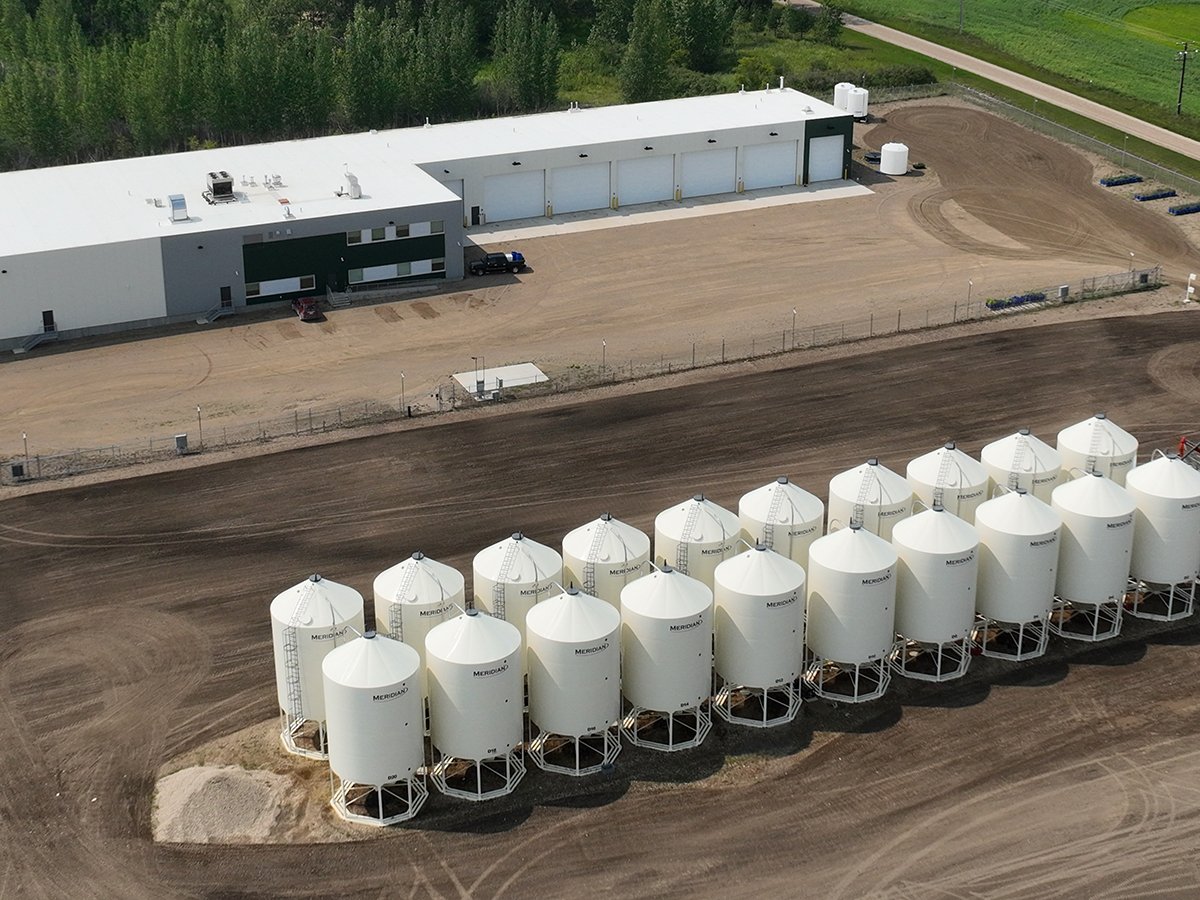FARGO, N.D. – Strip tillage is migrating westward and northward, up the Northern Great Plains from its birthplace in the Iowa, Indiana and Illinois cornbelt.
It’s coming at a snail’s pace, but it’s heading into Western Canada. Until now, the main obstacle here has been the extra pass required over the field. But that obstacle has been removed, as farmers saw at the Big Iron Show held in Fargo in mid-September.
Strip tillage involves tilling a narrow strip where seed rows go.
Read Also

Saskatchewan firm aims to fix soil with compost pellets
In his business, Humaterra, Leon Pratchler is helping farmers maximize yields in the weakest areas of their fields through the use of a compost pellet.
The tilled strip clears residue for more accurate seed and fertilizer placement and eliminates hair-pinning. It also helps dry wetter soils and warms cold spring soils.
But for some producers, it goes against everything they’ve been taught. They balk at the thought of making an extra pass.
Phil Needham of Needham Ag Technologies says ideology shouldn’t get in the way of good science.
Needham, known to prairie farmers as the chief agronomist with Opti-Crop since the mid-1990s, recently started his own agronomic service.
At the Big Iron event he showed innovations that make strip till more relevant to farmers on the Canadian Prairies.
He says many old-school producers believe they need full conventional tillage to get perfect seed and fertilizer placement.
For these farmers, strip till can be a step in the right direction of sequestering carbon and moisture. It’s a compromise that lets them have their black seedbed, but only in the immediate area of the seed row. Everything else remains non-tilled.
For dedicated zero tillers who have problems warming and drying the soil in spring, strip till can also be a beneficial compromise. In addition to warming and drying, it deals with severe surface residue left from a previous year.
Needham says strip till affects only the immediate seed row and does not have to be deep.
For both conventional and zero tillers, the degree of tillage in the strip depends on how aggressively their equipment works the soil.
Manufacturers of strip till equipment provide a range of adjustments, from shallow tillage that tickles the surface residue, to deep digging.
Farmers choose the adjustment based on soil type, soil moisture, soil temperature, residue cover, weed problems and their personal attitudes toward land management.
On the Canadian Prairies and northern states, resistance to strip till is often based on a misconception about the timing. Further south, in the U.S. cornbelt, strip till was originally a fall field operation that was done after the corn was off.
Fertilizer was often applied during the strip till operation, but seeding had to wait until spring.
That fall-only stigma has stuck to strip till like wet clay sticks to openers in a bad year. And the fall timing often poses a problem because the practice is best suited for wetter soil.
“Strip till generally provides the most benefit on wetter soils that get planted later. It’s only logical that the late-seeded crops come off later and that doesn’t always leave enough time for a fall strip till operation,” says Needham.
“That’s what we’re changing in strip tillage. The timing. Once you’re up to spring seeding, there’s no time for that special strip till pass. So let’s do the strip till and put down the seed and fertilizer at the same time.”
As well, he says the practice applies to more than corn. It can work for all crops.
Needham says slight modifications to the strip till implement allow it to put down fertilizer and seed in one pass as it performs its function.
“With one pass, you now clear the residue, lightly till the surface, warm the soil, apply fertilizer and place the seed where you want it.
“You place liquid or dry fertilizer along side the seed row. You adjust the lateral separation between the seed and fertilizer and the depth to fit your needs.”
He stresses that in a dry spring, there may be no advantage.
“Most farmers can park the strip till rig and hitch up a properly configured planter and achieve most or all of the same benefits in a single pass if you have dry conditions.”
Although Needham is reluctant to recommend putting anhydrous down with the seed, he says some of his clients have already devised their own anhydrous openers to work with his one-pass system.
He says anhydrous is best applied in a separate strip till operation, usually in the fall, the season for which the practice was originally designed.
Needham is working with attachments from Martin Industries. He says the Martin hardware required to convert an existing strip till implement into a single-pass seeding implement will retrofit most rigs.
His system begins with a pair of Martin floating row cleaners, preferably equipped with a pair of side treader wheels designed to limit wheel engagement in the soil.
Side treader wheels increase traction to keep the row cleaners turning in heavy residue and control how far residue is thrown to the side.
It’s important to install the floaters because they follow the contour of the field better than rigid row cleaners.
This combination of treader wheel and row cleaner prevents the teeth on the cleaner from penetrating the soil deeper than 1.5 inches.
“In this first part of this whole operation we move the residue away uniformly. Then we lightly till the soil for faster warming and consistent seed and fertilizer placement.”
The next device in the lineup is the adjustable Martin UMO fertilizer disc opener, which runs at a five-degree angle. It lets the operator place fertilizer one inch, two inches or three inches to the side of the seed row.
For depth adjustment, it lets the operator place fertilizer three-quarters of an inch above, even with, or three-quarters of an inch below the seed depth.
Starter fertilizer can also be placed within the seed row.
The fertilizer opener achieves the same placement accuracy as the seed opener because it follows the cleaner and treader wheel. It comes with a hardened boot, which is spring loaded against the disc to keep the disc free of soil buildup.
Although Martin offers different closing systems, Needham thinks the paired spike wheel with a drag chain might be most suitable in wet conditions.
Paired spike wheels are designed to improve seed slot closing in high moisture soils, especially those with a high clay content.
The Martin floating row cleaner assembly sells for $420 US per row. The fertilizer opener sells for $320 per row. A pair of spiked closing wheels with drag chain sells for $233 per row.
Needham says they are working with fertilizer placement either in the row or safely alongside a mid-row banding system.
For more information, contact Phil Needham at phil@needhamag.com or visit www.needhamag.com.















